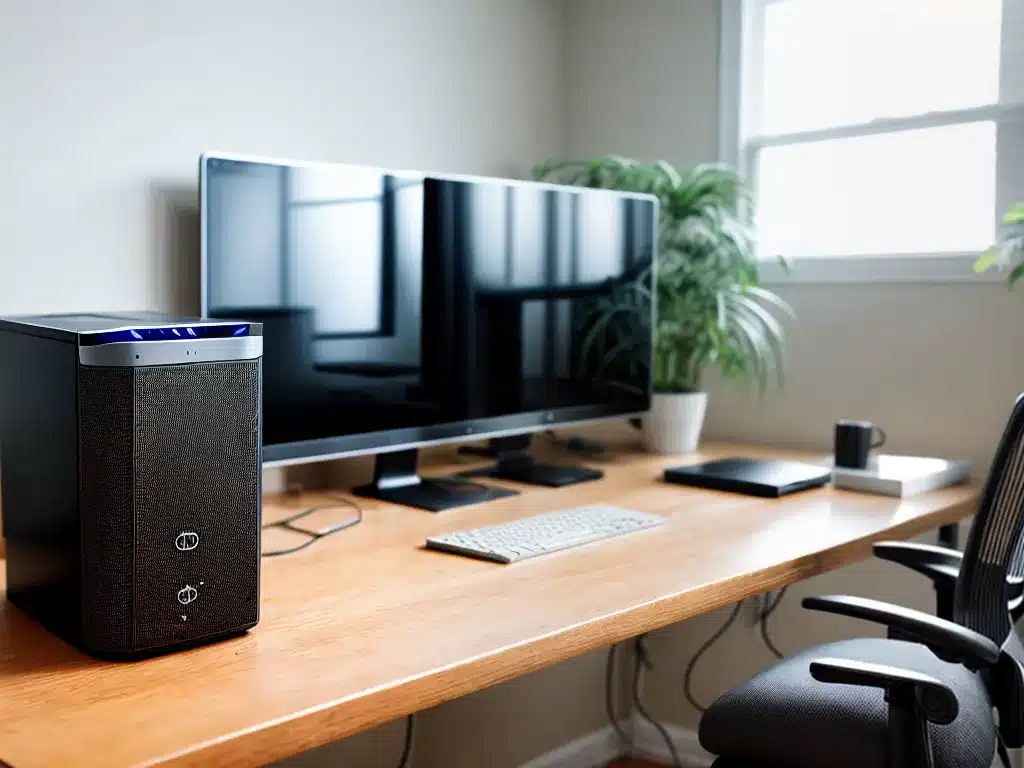

Having a dusty computer can lead to a number of problems. Dust buildup in your computer can cause it to run hotter, perform slower, and even shorten the lifespan of components. Thankfully, getting rid of dust buildup is easy with the right cleaning techniques and tools. In this article, I will provide tips to help you effectively clean dust out of your computer.
Why You Should Keep Your Computer Dust-Free
Keeping your computer free of dust has several benefits:
Improved Thermal Performance
Dust acts as an insulator and prevents efficient heat dissipation from computer components. Over time, dust buildup in heatsinks and fans will cause your CPU and GPU to run hotter which can lead to throttling. Regularly cleaning dust improves airflow and cooling.
Longer Hardware Lifespan
Excessive heat can damage hardware over time, leading to premature failure. Removing dust improves cooling to extend the operating life of components like the CPU and GPU.
Better Performance
With improved cooling, components like the CPU and GPU can maintain higher operating speeds and avoid throttling which improves system performance. Less dust also means better airflow through case fans to keep all components running optimally.
Reduced Noise
Buildup of dust in fans can throw off fan blades causing them to vibrate and generate noise. Cleaning fans eliminates dust buildup and greatly reduces annoying fan noises.
Cleaning Tools and Supplies
Having the right tools makes removing dust much easier. Here are some recommended items:
-
Compressed Air – Canned/compressed air is essential for blowing and dislodging dust.
-
Microfiber Cloths – Use lint-free cloths for wiping down components.
-
Paintbrushes – Soft bristle brushes are useful for loosening stuck-on dust.
-
Isopropyl Alcohol – High purity alcohol (>90%) combined with cloths cleans surfaces and thermal paste.
-
Cotton Swabs – Great for cleaning in tight spaces and around fans.
-
Antistatic Wrist Strap – Wearing a strap grounds you to prevent static discharge damage.
Safely Cleaning Dust From Components
Follow these tips when cleaning dust from your PC:
Power Down and Unplug the Computer
Always shut down, unplug the power cable, and press the power button to discharge remaining power before opening up and cleaning your PC. This prevents any chance of shock and short circuits.
Remove the Side Panel
Use a Phillips screwdriver to remove the side panel of your computer case and expose the interior components. This provides full access for cleaning.
Blow Out Dust With Compressed Air
Hold cans of compressed air upright and spray short bursts into the interior to blow out dust. Focus on fans, heatsinks, vents, filters, and around components. Slowly work around the whole case.
Use Paintbrushes for Stubborn Dust
For dust that doesn’t blow out easily, use soft bristle paintbrushes to gently loosen and brush it away. Avoid touching or knocking loose any components.
Wipe Down Surfaces
Use lint-free microfiber cloths dampened with isopropyl alcohol to wipe dust away from surfaces like fans, heatspreader tops, and the case interior. Let components dry fully before turning your PC back on.
Check Air Vents and Filters
Clean dust out of any air vents and intake filters on your computer case. Built up dust here greatly restricts airflow.
Clean Out Power Supply
Carefully flip over and open up your power supply to blow out and brush away any internal dust accumulation. This is vital for proper power supply cooling.
Reapply Thermal Paste If Needed
If you removed a CPU or GPU heatsink, clean old paste off and reapply fresh thermal paste for optimal heat transfer before re-attaching the heatsink.
Remove Dust From Inside Laptops
For laptops, refer to the service manual to open up the bottom panel and gain access to clean the heatsinks/fans and internal components.
Best Practices to Prevent Dust Buildup
Implementing these tips will minimize dust accumulation over time:
-
Use dust filters on air intakes like fan mounts and case vents. Clean filters regularly.
-
Keep your PC off the floor on an elevated surface. Floor carpets harbor dust.
-
Ensure your case has proper positive air pressure and adequate airflow. Add more intake fans if needed.
-
Don’t allow cables to block air vents or prevent airflow through the case.
-
Clean out your computer every 6 months at a minimum, more often if it’s in a dusty environment.
-
Use an electric duster or small handheld vacuum with brush attachment to regularly clean dust out of hard to reach areas.
-
Keep your workspace clean and dust-free.
Conclusion
Accumulated dust is damaging for your computer’s performance and lifespan. Thankfully, with minimal effort and the right tools, you can easily keep the inside of your PC in pristine dust-free condition. Regularly following these best practice cleaning techniques will allow your computer to run cooler and last longer. So grab a can of compressed air and get busy blasting away dust bunnies!












